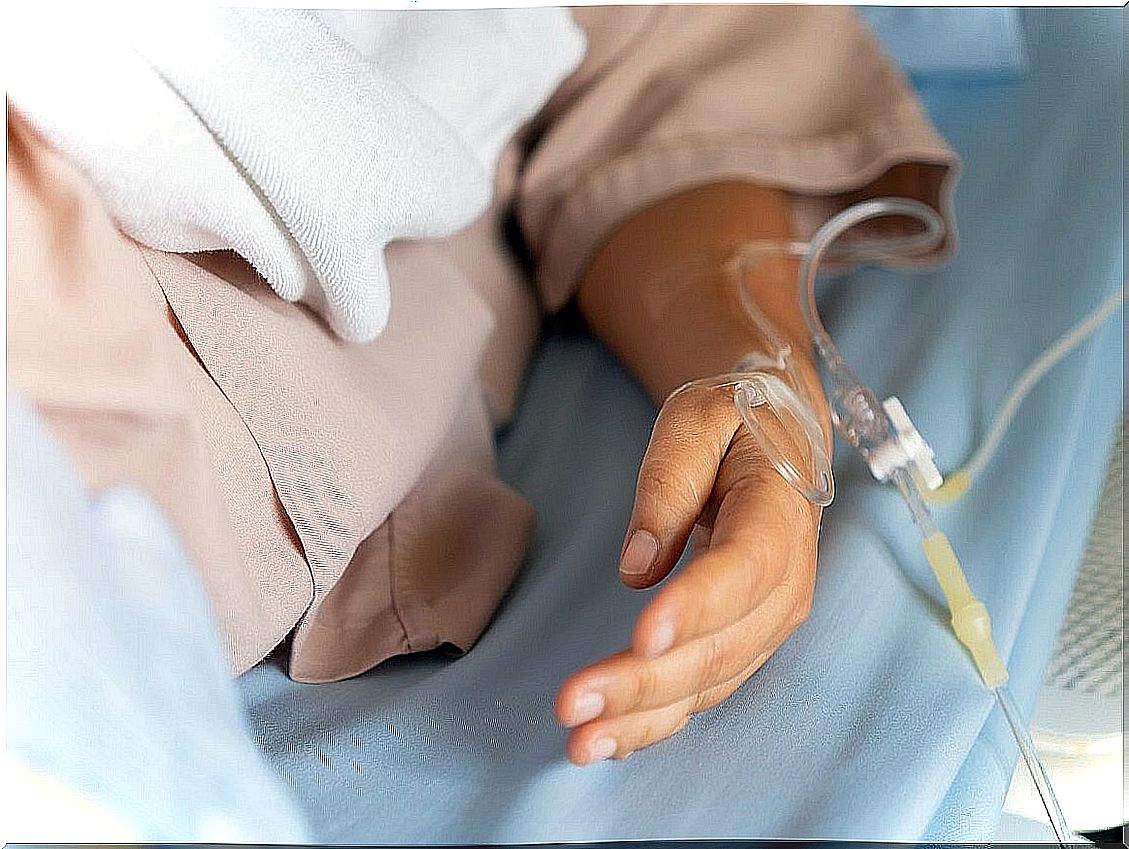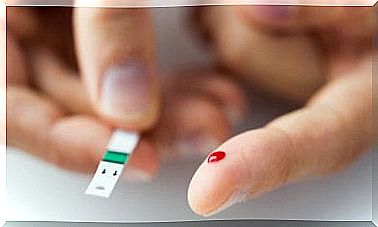Lead Poisoning: What Are The Consequences?
Lead poisoning or “lead poisoning” is a somewhat rare medical condition, but one that can lead to severe complications if left untreated. This substance is a heavy metal that does not perform functions in the human body, so any amount is toxic.
In the past, it was widely used in paints, fuels, and other products. Fortunately, research and public policies aimed at reducing its use have proven to be effective. Even so, isolated cases can be found due to occupational exposure or living in old places.
The symptoms are very nonspecific and the main risk groups are pregnant women and young children. Do you want to know more about it? In the next space we will tell you all the details.
How can lead poisoning happen?
Lead poisoning occurs when a large amount of this metal is ingested or inhaled. Until recently, it was a more or less common problem, as many products and fuels contained significant amounts of lead.
However, due to the intervention of international organizations such as the World Health Organization (WHO), cases have progressively decreased. In particular, lead can be found in the following objects and places:
- Paint for houses.
- Old toys.
- Pipes and taps.
- Batteries for cars.
- Some pieces of glass and ceramics.
- Shot.
- Some cosmetics.
- The floor, especially that exposed to gasoline or paint spills.
In the late 1970s, some measures were established in the United States of America to control cases of lead poisoning. Therefore, most of the paints that included this metal had to change their manufacturing processes.
Occupational exposure to lead includes those jobs that are related to ship repair, civil construction, mining, plastic or battery manufacturing, and plumbing.
In theory, these places should have their own prevention systems, based on an occupational health system, although in some cases accidents at work could occur.

Symptoms in adults
Depending on the degree of intoxication, symptoms can range from very mild to fatal. These are quite nonspecific, so in rare cases it is possible to detect the problem in a timely manner. Some patients may present the following clinical manifestations:
- Elevations in blood pressure.
- Anemia.
- Headache, abdominal, muscle and joint pain.
- Short-term memory and concentration problems.
- Weakness.
- Loss of appetite
- Constipation.
- Irritability.
Often these symptoms appear progressively. In fact, as long as the cause of the poisoning persists (associated with a work or home situation), it could get worse over time.
Symptoms in newborns
Because lead is permeable to the placental barrier, it can affect the developing fetus during pregnancy. As many cases of lead poisoning can go unnoticed in mothers, this can be a serious problem for babies.
At first, this situation can be associated with serious obstetric complications. These include miscarriage, preterm delivery, and intrauterine growth restriction (IUGR). In rare cases, fetal malformations can be generated.
If children are born, they are the most susceptible to medical complications, especially before the age of five. In fact, fatal encephalopathies associated with lead poisoning have been reported.
Even if patients receive timely treatment, sequelae may appear. Cognitive impairment, irritability and memory problems are some of the manifestations that usually occur throughout life.
How is lead poisoning diagnosed?
Except for very specific times of occupational exposure or situations at home, lead poisoning is not actively sought in hospitals. In fact, in the case of very mild symptoms, the diagnosis is very likely to be missed.
The only way to objectively diagnose the disease is through blood tests that measure the level of lead. The values depend on each laboratory, but because lead has few functions in the body, any level could be considered pathological.
Above 5 µg / dL, major medical complications can occur, especially in children under five years of age. Some patients may have levels of 150 µg / dL or more.
Further studies
In case of requiring hospitalization or complementary studies, it is very likely that the doctor will order the following tests:
- Complete hematic biometry (BHC) or complete hematology (HC): allows to observe hemoglobin levels, which can decrease in chronic poisonings.
- Ecosonogram or abdominal radiography: these studies make it possible to rule out the presence of inflammatory lesions.
- Bone marrow aspiration or biopsy: used to rule out other causes of anemia, especially when other parameters in the blood are altered. The results are usually normal.
- Long bone x-ray: because lead tends to accumulate in bone tissue, this would allow estimating data such as exposure time and severity of poisoning. Some researchers even take it as one of the best diagnostic indicators, as this study suggests.
How is lead poisoning treated?
After the diagnosis is made, treatment will depend on the severity of the symptoms and the estimated time of intoxication.
- If the patient has mild symptoms, careful observation and oral treatment is possible. In severe cases, hospitalization and intravenous therapy is the choice.
- In cases of severe acute poisoning, the patient is more likely to need to stay in a hospital facility. Chronic conditions, depending on the severity, could be managed more conservatively.
In either case, treatment consists of basic supportive measures and the administration of drugs. The first measures include the administration of intravenous solutions and gastrointestinal lavage, while the drugs are chelating compounds.
The latter term refers to drugs that have the ability to bind heavy metals in the blood. Thus, its toxicity decreases and its elimination through urine or bile is stimulated.

Pharmacotherapy
So far, there are four drugs for lead poisoning. Not all are approved globally, as there are specific regulations in various countries.
- Calcium disodium edetate: Also known as EDTA, it is given intravenously and usually in cycles.
- Dimercaprol: This medicine can be administered intramuscularly.
- Penicillamine: it is used for long-term oral treatments, so it can be managed with outpatient control.
- Succimer: it is also used orally.
All these options require a medical indication. Depending on the individual characteristics of the patient, complications such as hepatitis, liver failure, and allergic reactions may occur.
Lead poisoning prevention
The most common source of lead exposure today is contact with old products and the work environment. The first case is related to paint marketed before international regulations regarding lead in industrial settings.
If there is a probable exposure, it is important to remember the following:
- Wash surfaces that may be contaminated.
- Prioritize hand washing before and after eating, especially in children.
- In old home repairs, do not sand the surface manually and without protection.
- Maintain a healthy and balanced diet.
- Consume only drinking water, with adequate filtration and purification process.
- If pellets are handled in the usual way, they should not be put in the mouth.
When presenting symptoms compatible with lead poisoning, you should see a doctor as soon as possible. When the manifestations are mild, it is possible to plan an appointment in advance. In moderate or severe cases, go to an emergency department immediately.
Final recommendations in case of lead poisoning
Although lead poisoning can be a rare condition, it is necessary to seek medical advice in cases of probable exposure. This is very important in risk groups, such as pregnant women and young children. Even low levels can generate permanent sequelae.
Which specialist to go to?
Most of the medical specialties that treat the patient comprehensively can diagnose a case of lead poisoning. Therefore, going to a family doctor, internist or pediatrician is the initial step. In case of requiring evaluation by another specialist, it will be the doctor who will guide you throughout the procedure.
How to prepare for a consultation?
If you have planned an appointment with the doctor, try to implement the following recommendations as much as possible:
- Review in your mind when you began to suffer the symptoms, as well as the medications you took to be able to alleviate them.
- If you have any pre-existing conditions, please notify us up front. This includes chronic conditions and allergies, of course.
- In case of more or less recent laboratory tests, take them with you to the consultation, regardless of the format.
- Do you consume any medications? Bring it to your appointment or write it down on a piece of paper. In case of requiring any medication, there are some interactions that the doctor should consider.
- Try to identify a specific cause of lead exposure. In the previous sections we mentioned the most common sources.
- Go accompanied by another person. At times, anxiety may prevent you from clearly remembering your doctor’s recommendations.
The immediate intervention of cases of lead poisoning are decisive for the prognosis. Therefore, when suspected, it is best to seek prompt medical attention. Keep that in mind!









